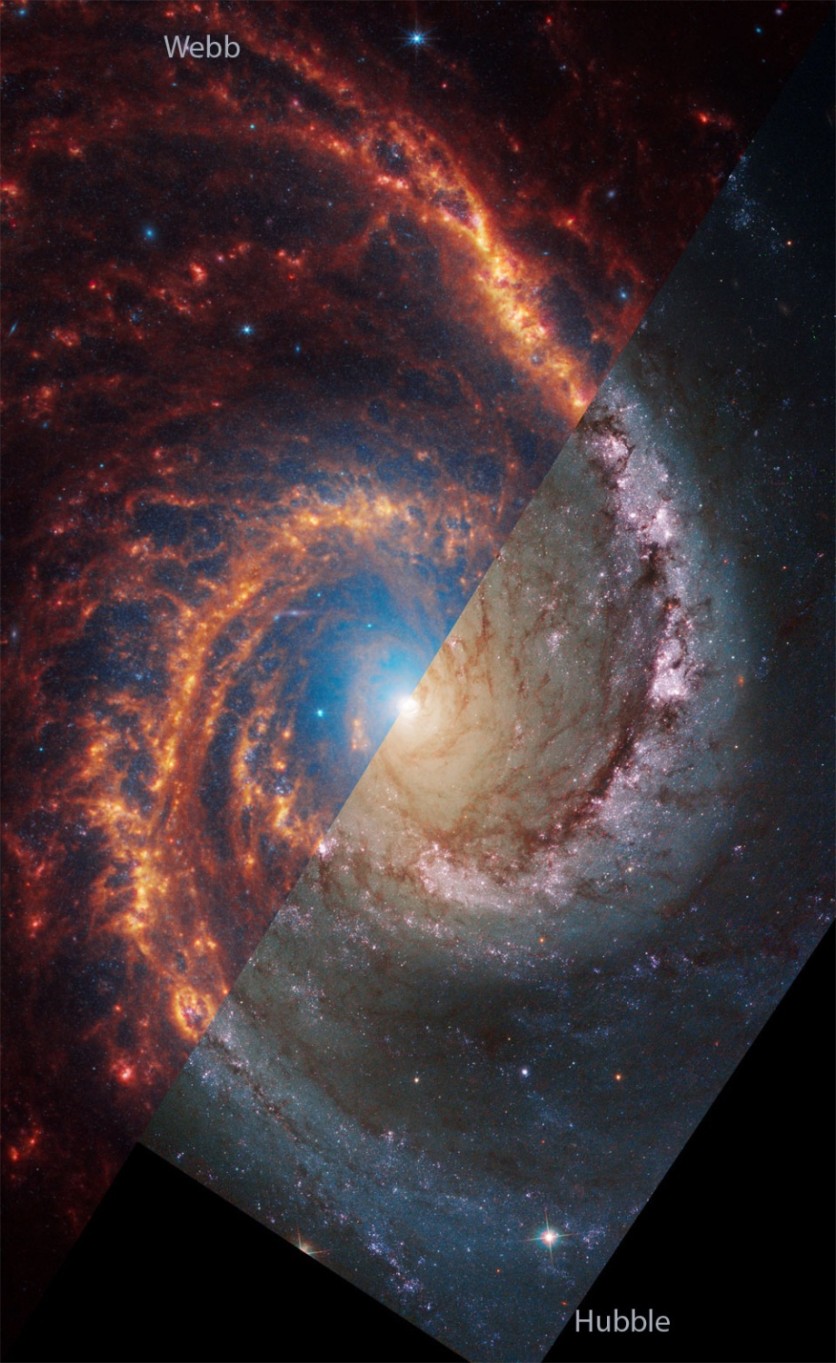NASA's Picture of the Day has revealed a captivating glimpse into the cosmic realm, showcasing the intricate beauty of a spiral galaxy through the lenses of two powerful space telescopes: the Hubble Space Telescope and the James Webb Space Telescope.
"In the rollover image, the other two sides of these images are revealed. Blinking between the two images shows which stars are particularly hot because they glow brighter in ultraviolet light, and the difference between seemingly empty space and infrared-glowing dust," NASA said.

The Spanish Dancer Galaxy
The featured galaxy, NGC 1566, commonly known as the Spanish Dancer galaxy, epitomizes the quintessential characteristics of a spiral galaxy, presenting a mesmerizing tapestry of stars, gas, and dust spanning vast cosmic distances.
What sets this particular image apart is its unique composition, a composite of two separate observations captured by Hubble and Webb.
The Hubble image, rendered in ultraviolet light, accentuates the vibrant hues of bright blue stars adorning the galaxy's sweeping spiral arms, juxtaposed against the shadowy backdrop of interstellar dust.
In contrast, the Webb image, captured in infrared light, illuminates the regions where dust emits light, unveiling a different facet of the galaxy's cosmic ballet.
The amalgamation of these two perspectives offers a comprehensive view of NGC 1566, showcasing the intricate interplay between stellar nurseries, dusty nebulae, and luminous star clusters that populate its celestial landscape.
Through a simple rollover between the two images, viewers can discern the nuances of stellar evolution and interstellar dynamics that shape the galaxy's morphology.
In Webb's infrared imagery, the gas and dust manifest as fiery hues of orange and red, delineating finer details of the spiral structure with jagged edges, hinting at ongoing processes of star formation and galactic evolution.
Conversely, Hubble's ultraviolet imagery portrays the gas and dust as murky brown lanes, obscuring some of the finer details while highlighting the brilliance of young, hot stars.
Subtle Anomalies
Amid the cosmic spectacle, subtle anomalies emerge, like the presence of diffraction spikes at the galaxy's core in Webb's image, indicative of potential activity associated with a supermassive black hole.
These observations underscore the intricate interplay between astrophysical phenomena and space telescopes' technological prowess in unraveling the cosmos' mysteries.
NGC 1566's portrayal in these images is a testament to the collaborative efforts of astronomers and space agencies in exploring the depths of space.
As part of the Physics at High Angular resolution in Nearby GalaxieS (PHANGS) program, this observation contributes to a broader understanding of the star formation cycle and galactic dynamics across cosmic epochs, according to NASA.
Situated approximately 60 million light-years away in the constellation Dorado, NGC 1566 stands as a beacon of cosmic inspiration, inviting viewers to marvel at the grandeur and complexity of the universe.
Related Article : Starry Pair: NASA's Hubble Captures Stunning Portrait of Spiral Galaxies Resembling Milky Way

ⓒ 2026 TECHTIMES.com All rights reserved. Do not reproduce without permission.




